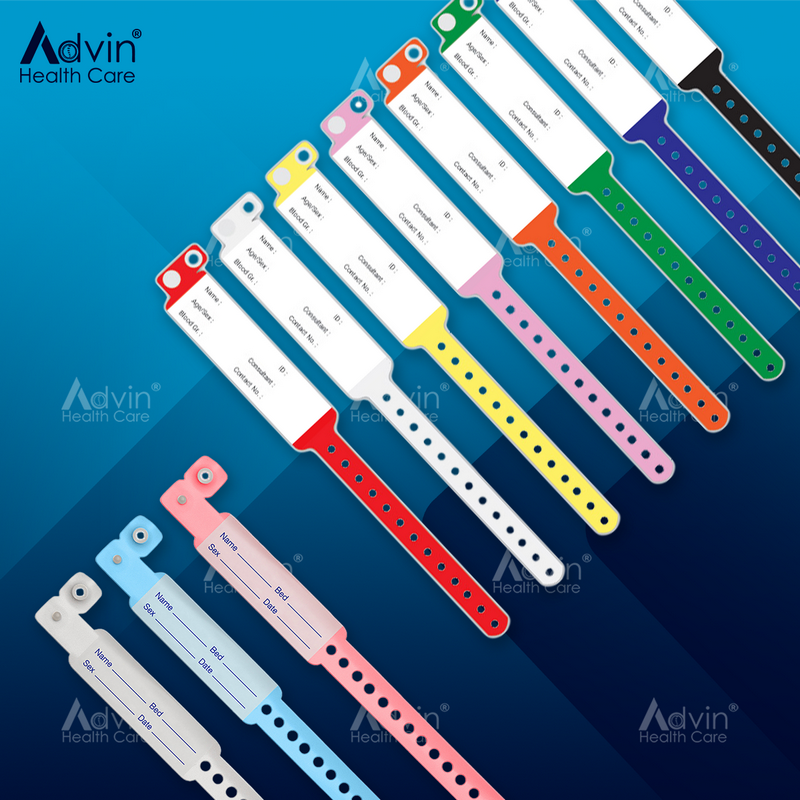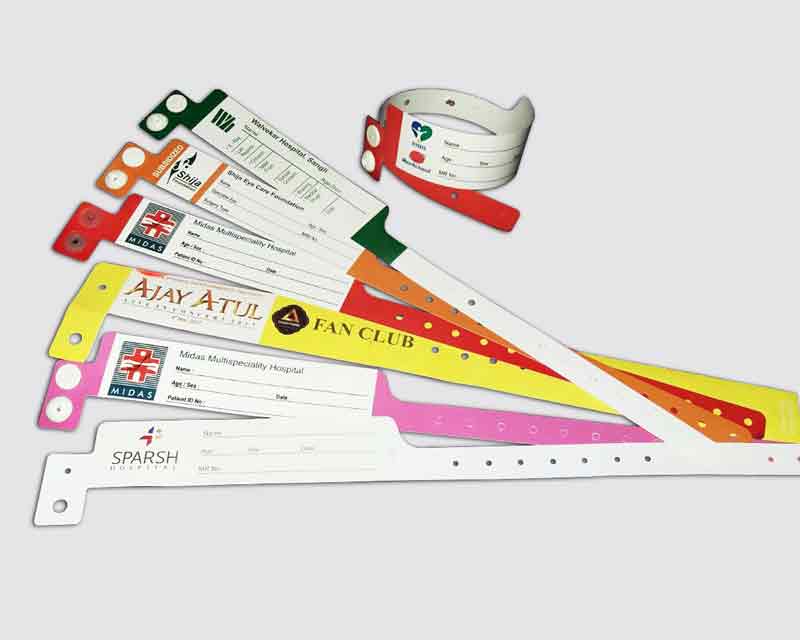Discovering the Numerous Sorts Of Patient Identification Band Made Use Of in Medical Facilities
In the elaborate world of healthcare, the essential role of Patient Identification bands frequently goes undetected. These bands, differing from easy paper wristbands to sophisticated RFID bands, form the foundation of Patient safety methods, making sure precision in Patient Identification. Yet, the vast variety of these bands, each with its distinct benefits and restrictions, is typically overlooked. As we navigate with this topic, one might get insight right into the subtle intricacies and crucial relevance of such bands in medical centers.
Recognizing the Significance of Patient Identification Bands
While they might appear like plain devices, Patient Identification bands play a vital duty in medical centers. These bands function as an essential tool for verifying Patient identification, preventing medical mistakes connected to misidentification. The bands usually present important info such as the Patient's name, age, blood kind, and any kind of known allergies. They enable medical care professionals to quickly access this important details, thus helping with exact and punctual clinical therapy. Patient Identification bands also aid in enhancing management jobs, making sure exact record-keeping and payment. Regardless of their simplicity, these bands symbolize the concept of Patient security, a foundation of high quality healthcare. Without them, the danger of clinical mistakes, and as a result, Patient damage, may substantially boost.
Typical Paper Wristbands: Their Use and Limitations
Traditional paper wristbands have actually been a staple in Patient Identification throughout different medical centers. While their use prevails, they harbor particular limitations that may influence their efficiency in Patient monitoring. This section will certainly concentrate on the range of their application and the fundamental downsides linked with their use.
Paper Wristbands: Usage Extent
In the world of Patient Identification, paper wristbands have long held a vital duty. These bands are commonly used in outpatient settings, where the Patient's remain is short-lived. Regardless of advancements in innovation, the simple paper wristband stays a cost-effective and trustworthy solution for Patient Identification in numerous healthcare situations.
Limitations of Paper Wristbands
Despite their widespread use, paper wristbands are not without their drawbacks. In addition, paper wristbands usually lack the technological capabilities of even more modern alternatives, such as barcoding or RFID chips, restricting their functionality to just displaying composed info. Paper wristbands can create discomfort or skin inflammation to some individuals, particularly when worn for prolonged durations.
Barcoded Wristbands: Innovations in Patient Identification
While Patient Identification has actually long been an essential aspect of healthcare, the introduction of barcoded wristbands symbolizes a significant leap ahead. These bands take advantage of the simpleness of barcoding innovation, enabling for Patient info to be swiftly scanned and accessed. They enhance the rate and accuracy of Patient Identification, reducing the risk of medical mistakes related to misidentification.
Radio Frequency Identification (RFID) Bands: a Step Towards Futuristic Healthcare
The advancement of Patient Identification bands has caused the development of Radio Frequency Identification (RFID) Bands (patient identification band). These cutting-edge devices present vital benefits for healthcare centers, using a much more effective and technologically progressed methods of Patient Identification. The execution of RFID in health care is a considerable step in the direction of an extra futuristic approach to Patient administration and safety
Comprehending RFID Bands

RFID Bands: Secret Advantages
Embracing a future where technology and healthcare combine, superhigh frequency Identification bands use a number of essential advantages. Primarily, these bands boost Patient safety by providing exact, click for more rapid Identification, thus decreasing medical mistakes. RFID bands can save a large amount of Patient information, including case history and allergic reactions, allowing personalized treatment. They likewise streamline management tasks, as the automated data access replaces manual procedures, enhancing efficiency and lowering documents. Moreover, RFID bands provide real-time tracking of individuals, vital in high-risk settings such as surgical treatment or intensive treatment. Last but not least, these bands are resistant and resilient to environmental aspects, ensuring regular functionality. Generally, RFID bands stand for a considerable advancement in Patient Identification technology, benefiting both clients and doctor.
Implementing RFID in Healthcare
As we enter a technically innovative period, the execution of RFID bands in medical care comes to be increasingly vital. These bands give a seamless way to track and identify patients, ensuring their safety and boosting performance in therapy procedures. RFID Visit Your URL bands supply countless advantages over conventional Identification methods. They can store a vast quantity of information, consisting of the Patient's case history and therapy strategies, which can be quickly accessed by doctor. This data helps medical professionals make educated choices concerning the Patient's therapy strategy. Moreover, RFID bands minimize medical mistakes by supplying precise Patient Identification, which is vital in stopping misdiagnosis or wrong medication management. Hence, the execution of RFID bands is a considerable step towards boosting Patient safety and security and health care shipment.

Color-Coded Wristbands: Aiding in Quick and Accurate Medical Diagnosis
In the dynamic setting of a clinical facility, color-coded wristbands have become essential devices for swift and exact Identification of a patient's clinical problem. These wristbands, used by clients, carry details shades that represent various clinical problems or standings. Red can suggest allergy risks, while yellow could symbolize a fall threat. This system is created to provide prompt aesthetic cues to medical care carriers, improving Patient safety and security and care high quality. In emergency circumstances, making use of these wristbands enables fast decision-making. Nonetheless, the effectiveness of color-coded wristbands relies on the uniformity of shade interpretation across healthcare establishments, requiring common standards for constant application.
Methods for Reliable Implementation and Administration of Patient ID Bands
Attaining optimal use Patient Identification bands requires a well-structured method for their execution and administration. The initial step involves training all health personnel on the significance of properly using and reviewing these bands. Healthcare facilities must systematize the usage of ID bands across all departments, guaranteeing uniformity and minimizing disparities. Routine audits must be carried out to verify adherence to policies and to rectify any kind of incongruities. Patient education is also critical; individuals have to comprehend the function of the bands and the requirement for their consistent wear. patient identification band. It's crucial to have a back-up plan in area, such as barcode scanning or biometrics, to make sure that Patient Identification is never endangered.
Conclusion
Patient Identification bands are important in medical centers to ensure security and precision. Standard paper, barcoded, RFID, and color-coded wristbands each hold unique advantages, varying from cost-effectiveness to advanced data storage space and immediate clinical notifies. Reliable implementation and administration of these bands can significantly minimize clinical errors, improve performance, and enhance total Patient care. Therefore, understanding and making use of these Identification tools is extremely important for maintaining high requirements in medical care.
These bands, differing from straightforward paper wristbands to advanced RFID bands, form the backbone of Patient safety procedures, making certain accuracy in Patient Identification.The evolution of Patient Identification bands has brought about the development of Radio Frequency Identification (RFID) Bands. Generally, RFID bands represent a considerable development in Patient Identification technology, benefiting both patients and healthcare providers.
RFID bands reduce medical errors by providing accurate Patient Identification, which is vital in avoiding misdiagnosis or incorrect medicine administration. Patient education is additionally crucial; people must recognize the objective of the bands and the requirement for their continuous wear.
Comments on “The Importance of Using a Patient Identification Band in Current Medical Practices”